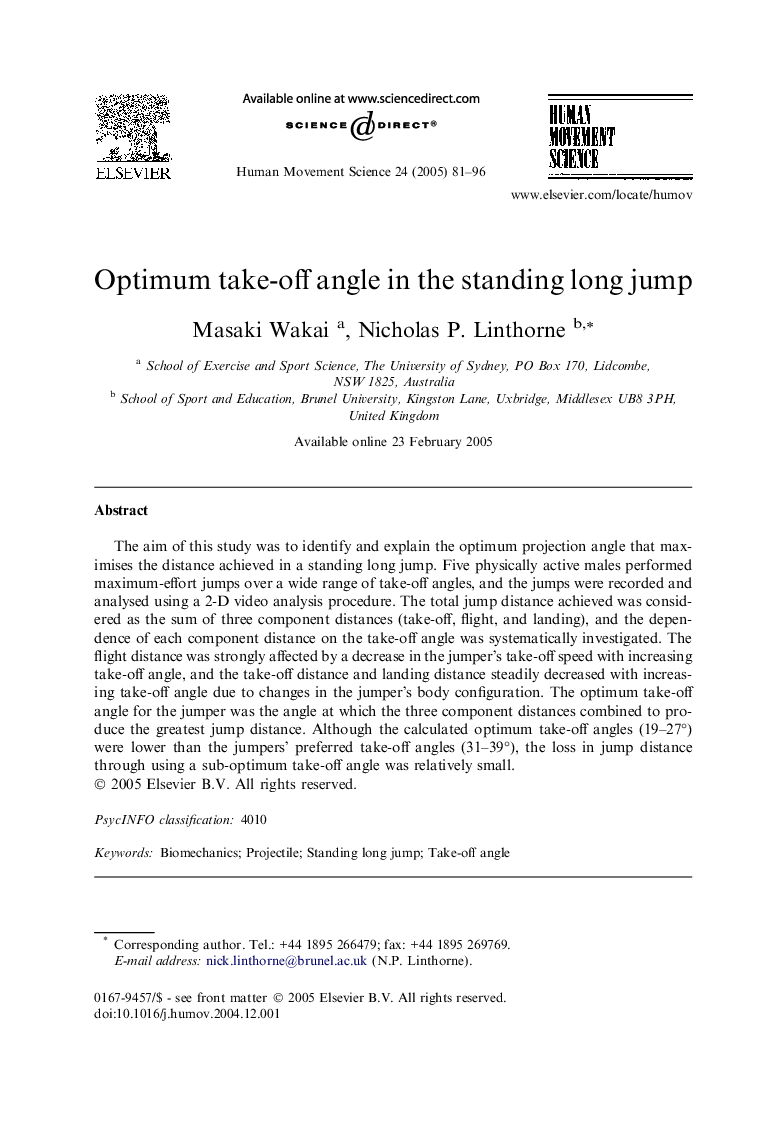| Article ID | Journal | Published Year | Pages | File Type |
|---|---|---|---|---|
| 10459351 | Human Movement Science | 2005 | 16 Pages |
Abstract
The aim of this study was to identify and explain the optimum projection angle that maximises the distance achieved in a standing long jump. Five physically active males performed maximum-effort jumps over a wide range of take-off angles, and the jumps were recorded and analysed using a 2-D video analysis procedure. The total jump distance achieved was considered as the sum of three component distances (take-off, flight, and landing), and the dependence of each component distance on the take-off angle was systematically investigated. The flight distance was strongly affected by a decrease in the jumper's take-off speed with increasing take-off angle, and the take-off distance and landing distance steadily decreased with increasing take-off angle due to changes in the jumper's body configuration. The optimum take-off angle for the jumper was the angle at which the three component distances combined to produce the greatest jump distance. Although the calculated optimum take-off angles (19-27°) were lower than the jumpers' preferred take-off angles (31-39°), the loss in jump distance through using a sub-optimum take-off angle was relatively small.
Related Topics
Life Sciences
Neuroscience
Cognitive Neuroscience
Authors
Masaki Wakai, Nicholas P. Linthorne,
